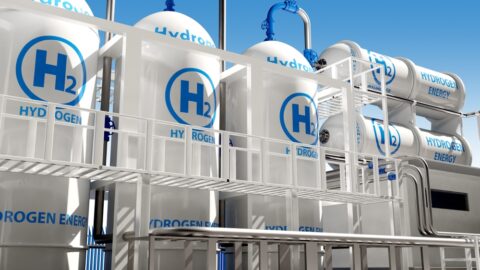Monash University’s Climateworks Centre has released new modelling data that indicates that Australia can still achieve emissions reduction in line with the Paris Agreement, provided that it takes decisive and increased action across all sectors.
The two scenarios released represent potential pathways for decarbonising Australia’s economy in line with the Paris Agreement, while meeting energy demand. The scenarios model limiting warming to well below 2°C (1.8 degrees) as well as limiting to 1.5°C based on Australia’s fair share of the remaining global carbon budget.
To align with global ambition for well below 2°C of warming, Australia’s 2030 annual emissions would fall 48 per cent below 2005 levels. This extends to 61 per cent below 2005 levels by 2035, and net zero emissions by 2050.
If aligned with limiting warming to 1.5°C, Australia’s 2030 emissions would reach 68 per cent below 2005 levels. By 2035, Australia’s modelled emissions reach 85 per cent below 2005 levels, and achieve net zero emissions by around 2039.
The scenarios show the opportunities for industry sectors and governments to achieve these emission reductions and meet Australia’s net zero targets in line with the Paris Agreement’s global goals.
Explore the scenarios
Climateworks Centre CEO, Anna Skarbek, said that this latest modelling incorporates the latest science on the carbon intensity of Australia’s economy with the most economically efficient route to carbon reduction and provides a trajectory to net zero emissions.
“The trajectory for 1.5°C and well under 2°C is quite similar in important respects, meaning that carbon emissions reductions work undertaken today can contribute meaningfully and economically to limiting warming to 1.5°C, which research increasingly shows is crucial to avoiding the worst impacts of climate change,” Ms Skarbek said.
“If aiming to cut emissions in line with keeping global warming below 1.5°C, Australia would also need to aim for net zero before 2040, more than a decade sooner than its current commitment of 2050.
“That challenge is already being met by a range of companies and jurisdictions that have earlier net zero commitments.”
Ms Skarbek said that the scenarios offer a view of what is possible, but require swift action across all sectors.
“Our scenarios demonstrate the need for action in all sectors, with a strong dependency on renewable energy to enable decarbonisation across most of the sectors.
“It also includes the introduction of hydrogen into our modelling to support harder to abate sectors like industry and long-haul freight, with green hydrogen displacing blue hydrogen in the market from 2030.”
The Federal Government is now developing net zero plans for six sectors to help them reduce emissions, including policy actions and technology investments.
Ms Skarbek said the Climateworks Centre modelling offered a starting point for developing those plans in key industry sectors, including:
Buildings: Increasing energy efficiency and electrification of housing plays a significant role in reducing emissions and limiting warming in both scenarios. Housing efficiency can improve by 41 per cent by 2050 compared to today’s levels.
Transport: Significantly higher uptake of electric vehicles (EVs) is needed for achieving alignment with Paris Agreement goals. If 56 per cent of all new passenger car sales by 2030 are EVs, this will support the well-below-2°C scenario, while if 73 per cent of new car sales are EVs, this will support the 1.5°C scenario. Shifting transport modes away from cars to public transport, cycling, walking and moving freight from road to rail are also necessary alongside these levels of EV uptake.
Industry and energy: Earlier and faster uptake of electrification and hydrogen technologies in the industrial and resource sectors through the 2020s and 2030s would help reduce hard-to-abate emissions by between 54 and 67 per cent by 2050. Hydrogen could potentially be used in industry processes requiring heat, in transportation through the use of fuel cells, and as a replacement for natural gas in buildings.
Agriculture: Agricultural emissions, mostly methane from livestock and nitrous oxide from fertilisers, make up a substantial share in both scenarios from the mid-2030s onward. The modelling finds opportunities to reduce emissions by adding algae to livestock feed and rolling out slow and controlled release fertilisers.
Land-based sequestration: Land management practices such as tree planting to absorb carbon dioxide and emerging soil carbon technologies will also be crucial to complementing efforts to reduce emissions in other economic sectors. The modelling shows that achieving 1.5°C-alignment would need vastly more nature-based sequestration under current best available data for emissions reduction potential in other sectors. Carbon dioxide removal (CDR) is not a replacement for efforts to reduce emissions in other sectors. Total emissions from buildings, transport, industry, energy and agriculture reduce by 56–68 per cent by 2035 compared with 2005 levels. The model resorts to CDR almost exclusively to counterbalance hard to abate emissions. Climateworks is currently working with Deakin University to update the Land Use Trade-Offs model to complement its AusTIMES model findings.
About the modelling
Climateworks uses scenario modelling to envisage how different levels of climate ambition might look for the Australian economy.
Using a tool called AusTIMES – developed over several years, in partnership with CSIRO – Climateworks modelled two possible emissions pathways, shown in the graph below.
The first shows Australia rapidly reducing emissions, doing its fair share of limiting global warming to 1.5°C.
The second line shows a slower pace of emissions reduction which would help keep global warming well below 2°C.
The Climateworks and CSIRO AusTIMES model is an Australian implementation of the Integrated MARKAL-EFOM System (TIMES). Developed under the International Energy Agency’s (IEA) Energy Technology Systems Analysis Project (ETSAP), the TIMES energy system modelling framework has been used extensively in over 20 countries, with the Australian version developed by CSIRO and Climateworks.

















